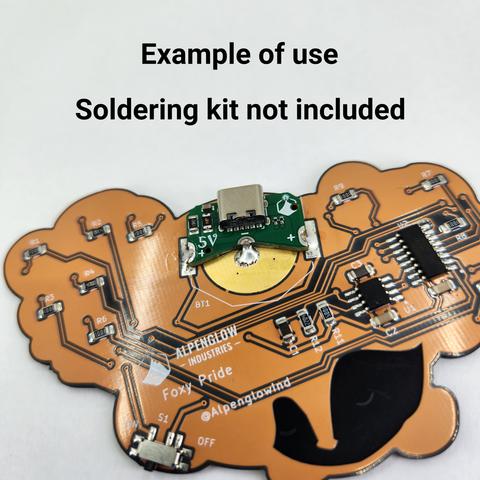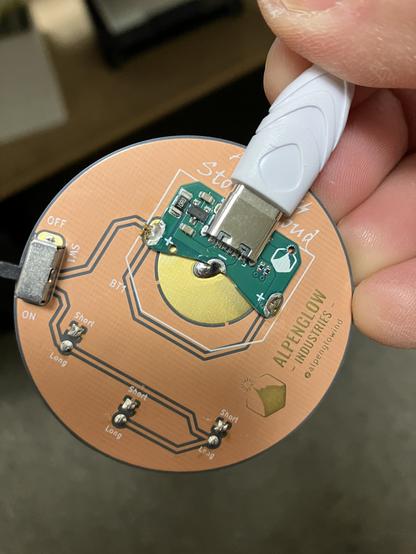@todbot @oshpark @maketvee I don't do much on the cli, but I do run a little script for production flashing chips that can be seen here: https://www.youtube.com/watch?v=mRDbnhS1aow
I like figuring out how things work, and using that to solve problems. Software, hardware, whatever!
I have a background in large scale web applications, but have also been tinkering with electronics my whole life.
Recently I spent most of my time working on Pixelblaze.
I also enjoy photography, games (on/offline), nature, swimming, family time, and geeking out with people on shared interests.
@todbot @oshpark @maketvee
I've taken to putting the cube pinout in kicad, shrunk down inside the MCU symbol.
It's possible to use the chips without the LL drivers, just the peripheral headers, etc. but having a cube generated project with them is handy because there's a lot of little clocks and enable bits that have to get set that are easy to miss.
@todbot @oshpark @maketvee Firmware for that is here: https://github.com/simap/SaoScope
My process is to use cubemx, figure out what pins do what, configure most of the basics, configure for LL drivers. Export as a cmake project, then use the STM32 vscode extension to import it.
Even the LL drivers are kinda bloaty, but not too bad. I usually go by the reference manual and datasheet, since that has the most information, then figure out what LL calls to make, or just poke registers as needed.
They fit both through-hole and SMT CR2032 side-insert footprints, and the castellations make them easy to solder. There's a typical 3V version and a specialty 5V version for boards that use 2 stacked CR2016s.
I designed a new background for you all. Download it here or buy it on my Patreon store: https://www.patreon.com/straithe/shop/digital-plants-1509024
I currently have one Fibonacci512 PixelBlaze available for sale, DM me if interested. With everything going on, this may be the last one I have available for quite some time.
Please note this one uses WS2812 LEDs, not SK9822. It's still gorgeous (if I do say so myself). 😁
Fully assembled, includes the brilliant #PixelBlaze and Sensor Expander by @wizard for sound-reactivity, live-coding patterns via web UI over wi-fi, etc.
More info: https://www.evilgeniuslabs.org/fibonacci512-pixelblaze
PCB assembly and packing process.
@diyelectromusic Figured I can double frequency for each octave by dividing the period, and less error if I start with a large number and divide than multiply a smaller one. I didn't realize this is actually a thing!
The idea is that you have some number of voices, these are generators, could either be different "patches" or the same if you wanted polyphony. Then each voice has a number of audio nodes that can be envelopes, oscillators, filters, mixers, etc. Every node has an output and gain pointer input, and then specialized by type. It's fairly lightweight, but does have some overhead.
On an STM32G030 at 16MHz, it can do 2 voices with 4-5 nodes each with a sample rate of 12,500Hz. About 3K of flash.
I made a super fast simple sound synthesis engine.
Designed for microcontrollers, it uses little RAM and flash. Intended for 32-bit microcontrollers that have a fast multiply, like ARM Cortex-M0.
Tired of Wordle? Here’s a new game of anagrams! Show us your @adafruit cart with a message spelled in LED filament letters! Don’t forget to include the qty of each letter in your screenshot! (not affiliated with adafruit, just thought these letters were great)
@stoneymonster wow that’s gorgeous!
Playing with light sensors, data logging in MCU flash, and USB. The VEML3328 is pretty neat. RGB, clear (wide response photodiode) and IR and runs over I2C, and has a super wide range of possible sensitivities. I'm auto ranging it, and storing milli lux units compressed into 16 bits, using an 11 bit base and 5 bit shift exponent to store values for data logging.
If anyone is hiring a remote engineer, I'm available. I have extensive experience in circuit design, schematic capture, and layout as well as parts sourcing and design for manufacture. I also have experience designing mechanical parts and enclosures for 3D printing and injection molding. I've also designed and sourced packaging, including both graphical and dimensional components. I'm proficient in the use of KiCAD, Fusion360, etc. I also write firm/software in a limited selection of languages.
Hey soldering kit makers! Struggling with new coin cell regulations and have a pile of PCBs with coin cell battery holder patterns on them? I made a thing for ours that converts them to USB power, maybe it's handy for you. Ship this instead of a CR2032 holder and boom, your kit no longer contains or uses a coin cell, no compliance needed. It's designed for side-slide style holders (SMT or through-hole) and easy to solder.
Nice Mandelbrot viewer, can generate video too! https://mandelbrot.page/
So 4 pin common anode/cathode RGB LEDs can be charlieplexed! I made a tool that helps figure out how many you can run given a number of GPIO, then went overkill and added PWM on a subset of them, and refresh rates for charlieplex scanning. Shows a table for PWMable configurations.
@MLE_online I like the ones that have some kind of RC power system that start strong and get quieter the more you press them. Then if you wait a second they get louder. Blame the people that install public fidget toys.
@ferrix @chris_gammell and definitely do not lick.






